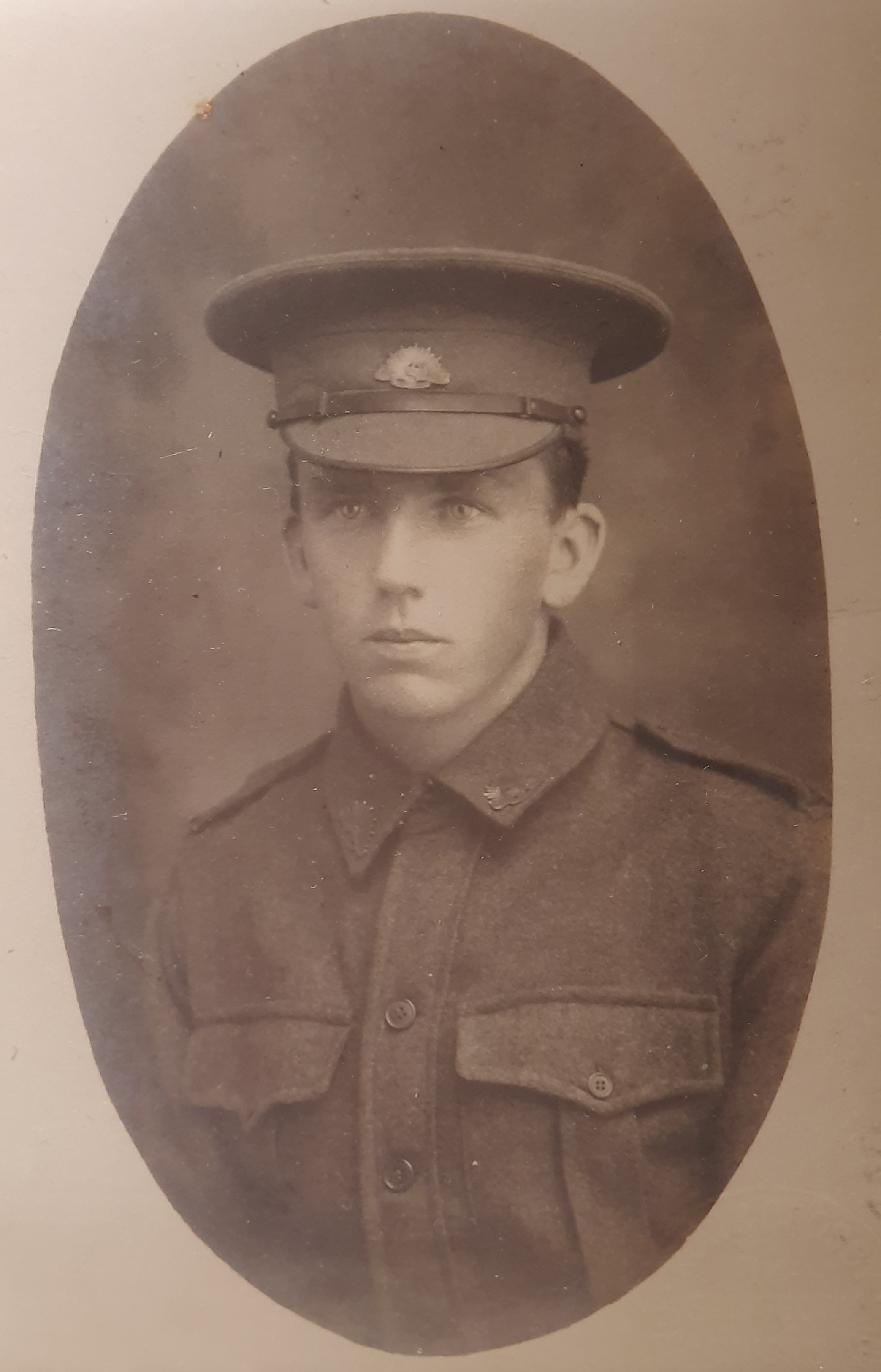Pte
Ernest William Wood
Information about birth
|
Date of birth: 13/01/1897 |
|
Place of birth: Brisbane, Queensland, Australia |
General information
|
Last known residence: Wickham Terrace, Brisbane, Queensland, Australia |
|
Profession: Customs clerk |
|
Religion: Methodist |
Army information
|
Country: Australia |
|
Force: Australian Imperial Force |
|
Rank: Private |
|
Service number: 78 |
|
Enlistment date: 04/12/1915 |
|
Enlistment place: Brisbane, Queensland, Australia |
|
Units: — Australian Infantry, 41st Bn. ( The Byron Scottish ) (Last known unit) |
Information about death
|
Date of death: 02/03/1963 |
|
Place of death: Brisbane, Queensland, Australia |
|
Cause of death: Death post-war (unrelated) |
|
Age: 66 |
Distinctions and medals 2
|
British War Medal Medal |
|
Victory Medal Medal |
Points of interest 5
| #1 | Place of birth | ||
| #2 | Last known residence | ||
| #3 | Enlistment place | ||
| #4 | Place of wounding | ||
| #5 | Place of death (approximate) |
My story
Ernest William Wood was born on 13 January 1897 in Brisbane, Queensland, Australia. He was one of the twelve children of John William and Elizabeth Brewster. At a young age he joined the Queensland Naval Reserve as a cadet in the early 1900s. There he learns signalling even though he was (red-green) colour-blind. Before WWI, Ernest worked as a customs officer. On 4 December 1915, when almost 19 years of age, he enlisted for army service at the Brisbane recruiting office. He served as a private with service number 78 in the 41st Australian Infantry Battalion of the Australian Imperial Force, part of the 11th Australian Brigade of the 3rd Australian Division.
In June 1917, the 41st Battalion provides a supporting role in the Battle of Messines. A few months later, in October 1917, the battalion takes part in the Battle of Broodseinde, capturing Broodseinde on 4 October. On 5 October 1917, the 41st Battalion holds the line at Berlin Wood and Hamburg Farm. At 6 a.m. the following day, the battalion is relieved by the 34th Battalion. The 41st is placed in reserve position behind Van Isackere Farm. They remain in this entrenched position until 20 October 1917.
On 19 October 1917, Ernest William Wood was seriously wounded at Broodseinde. He later tells his children that he is setting up telegraph cables amid artillery shelling. Suddenly a projectile landed at his feet and exploded. Flying shrapnel injures his left leg and breaks his upper right arm. Helpless and injured, Ernest William lies in the mud for days before rescue comes. Ernest is repatriated to Camiers, France. Towards the end of November 1917, Ernest William is transferred to a hospital in Britain. There he recovers further after which he finally returns to Australia on 5 April 1918. He was discharged from military service on 26 October 1918.
After Ernest William Wood fully recovered, he worked as a clerk in the Commonwealth Department of Light Houses and Shipping until his retirement. On 4 November 1922, he married Vignetta Erica Dahl. Together they have six children. During WWII, he serves in the army one last time. He dies on 2 March 1963 in Brisbane at the age of 66.
In June 1917, the 41st Battalion provides a supporting role in the Battle of Messines. A few months later, in October 1917, the battalion takes part in the Battle of Broodseinde, capturing Broodseinde on 4 October. On 5 October 1917, the 41st Battalion holds the line at Berlin Wood and Hamburg Farm. At 6 a.m. the following day, the battalion is relieved by the 34th Battalion. The 41st is placed in reserve position behind Van Isackere Farm. They remain in this entrenched position until 20 October 1917.
On 19 October 1917, Ernest William Wood was seriously wounded at Broodseinde. He later tells his children that he is setting up telegraph cables amid artillery shelling. Suddenly a projectile landed at his feet and exploded. Flying shrapnel injures his left leg and breaks his upper right arm. Helpless and injured, Ernest William lies in the mud for days before rescue comes. Ernest is repatriated to Camiers, France. Towards the end of November 1917, Ernest William is transferred to a hospital in Britain. There he recovers further after which he finally returns to Australia on 5 April 1918. He was discharged from military service on 26 October 1918.
After Ernest William Wood fully recovered, he worked as a clerk in the Commonwealth Department of Light Houses and Shipping until his retirement. On 4 November 1922, he married Vignetta Erica Dahl. Together they have six children. During WWII, he serves in the army one last time. He dies on 2 March 1963 in Brisbane at the age of 66.
More information 1
|
The AIF Project (UNSW Canberra) https://aif.adfa.edu.au/showPerson?pid=330501 |
